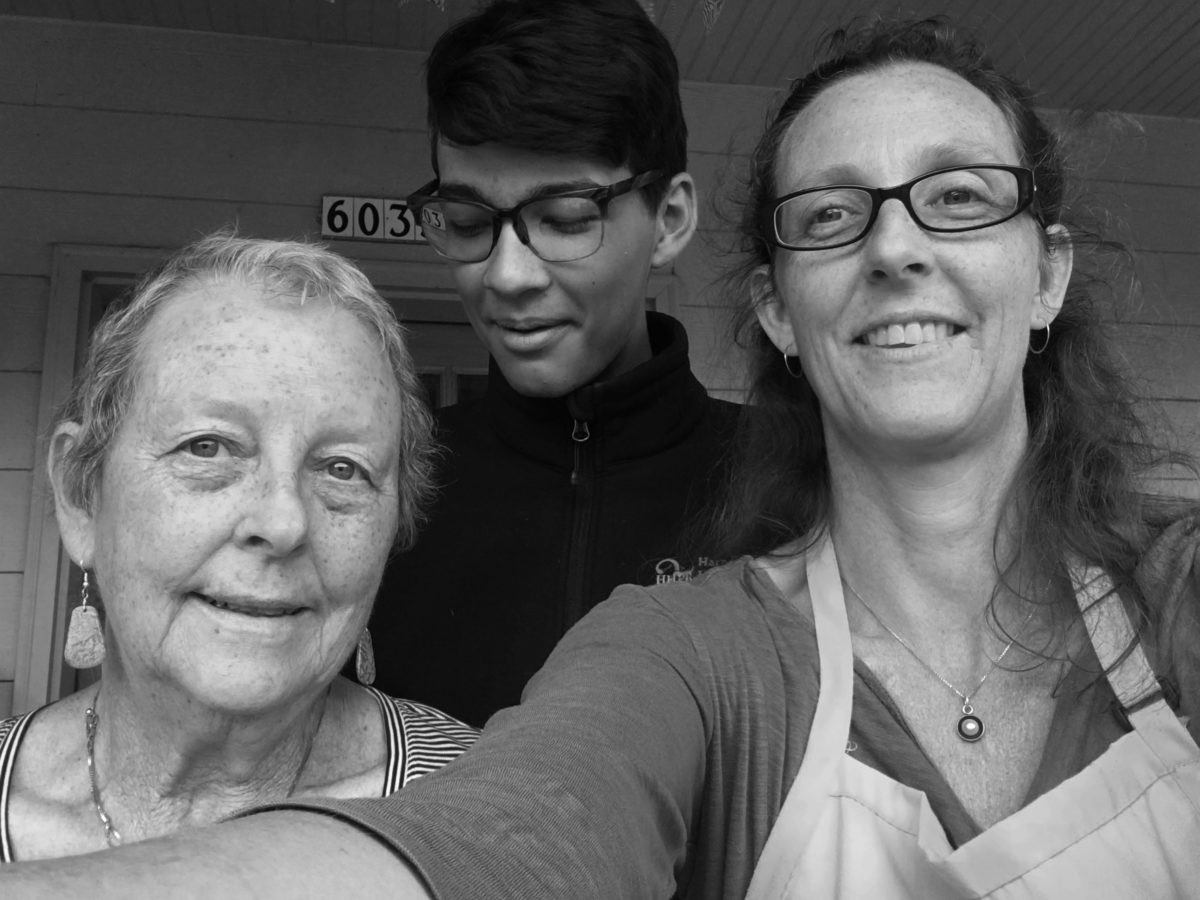Q&A with Jes Maran
Jes Maran, who was elected to the SNA Board last June, has been fearlessly leading the many projects of the Board’s Community Care Committee (otherwise known as SNACC) since December. She lives with her mom (Cathie), son (Octavo) and cats (Thor, Fenn, and Bit). Maran co-founded and runs the Formation Lab, a company that integrates social equity into the planning, design and management of public infrastructure with fellow Sunnyside resident, Nicki Pozos.
What brought you to the neighborhood and when?
We’ve been in this house for almost three years. Before that we lived in North Portland. My Mom, Dad, myself and my son lived in the house in North Portland until my dad passed in 2018. I got pregnant when I was in graduate school. That wasn’t really in my plans, so my parents said I could live with them. My folks and I raised Octavo together. My son did say at one point, “I would really like to not have any more parents; I feel like I have way more parents than everybody else.” I said, “Yeah, that’s fair.”
How would you say Sunnyside is different from other neighborhoods you’ve lived in?
It’s definitely a more well-off neighborhood than where I was, generally speaking. There’s a lot more diversity of family types and it’s louder and more active and it just feels a lot more energetic. Inner SE has its own strong personality that’s distinctive, but the individual neighborhoods don’t feel like they have a real strong barrier—Richmond, Sunnyside—they kind of blend in together. But Sunnyside always feels like it’s the heart, right? We have a chunk of Hawthorne; we have the best parts of Belmont.
Houselessness is nothing new in Portland, but what was the moment for you when you thought, yikes, this is really next level?
I long had a sense of compassion, but the turning moment for me was talking to one of the men who was camped over at Sunnyside Park and he talked about going to Sunnyside Environmental School. He and his sister went there and he talked about his teachers, and playing on the playground as a kid. This had been his home for his whole life and it still is his home. This just shifted for me from the sense of houseless folks as being this sort of transient intruder to being like, oh, you’ve been here a lot longer than I have, and you know this place way better than I do. I am the visitor.
What does the Community Care Committee do?
Since it came together in its current form last December, we’ve been supporting houseless neighbors primarily, but that’s expanded into general service to the neighborhood. It’s been out of this committee that Vincent [Dawans] developed his trash pick-up crew and Hannah [Wallace] developed the shower program. Then Ash [Hester] did a big clothing drive over the winter and Matt [Lembo] and I (and others) have worked on the sanctioned sites initiative. The initiative is about how Sunnyside can create shelter for houseless residents so that we can disrupt the sweeps process of just shifting people from place-to-place and start building places for people to live to be more stable, so they can get their feet under them in order to be healthier and/or to move to the next phase in their life.
Tell me about the first site, Beacon Village.
It’s a 10-unit tiny house village on the parking lot of Bridgeport United Church of Christ in Montavilla. The church approached Pat Schwiebert, the founder and director of Beacon PDX, to let her know they were interested in renting out space. We’re focused on the village itself and taking it through permits. We’ve ordered the houses, we’re getting the leveling platforms built, and coordinating the volunteers to create a safe space. I’m hoping that we’re able to get folks moved in in a couple of months.
There have been two community meetings about Beacon Village. What was your experience of the second one, held on June 8th?
What I heard was a lot of fear about one’s personal space being infringed upon—fear of increases in crime and fear of visual blight. But I also heard a lot of folks really wanting to be supportive, but just having concerns about how it’s implemented. It was interesting to see, as in any neighborhood (and I think we have this very much in Sunnyside) that you have a younger cohort of folks for whom this is a no-brainer. Then there is an older group of folks — generationally but also people who have lived in the neighborhood longer — who just don’t want a village anywhere near them.
One of the things that’s interesting to me is that the church is private property. It’s not a public facility. I strongly support the notion that as a good neighbor, it’s important to share when you’re making big changes. We don’t necessarily tell our neighbors exactly what we’re doing in our own homes. So there’s just a little bit of feeling like there’s a right to know those things.

